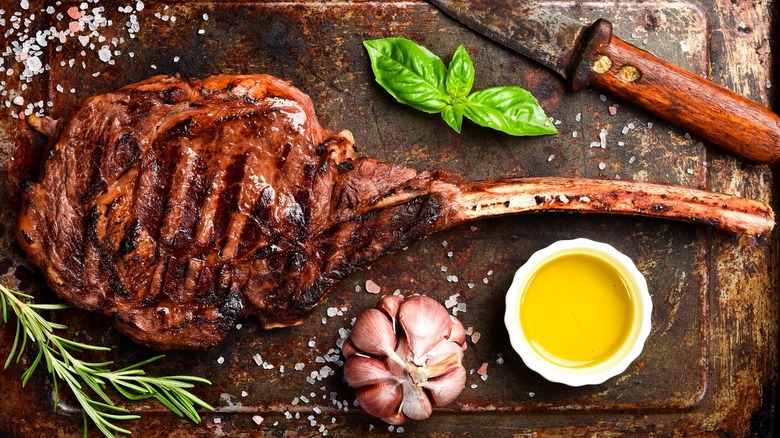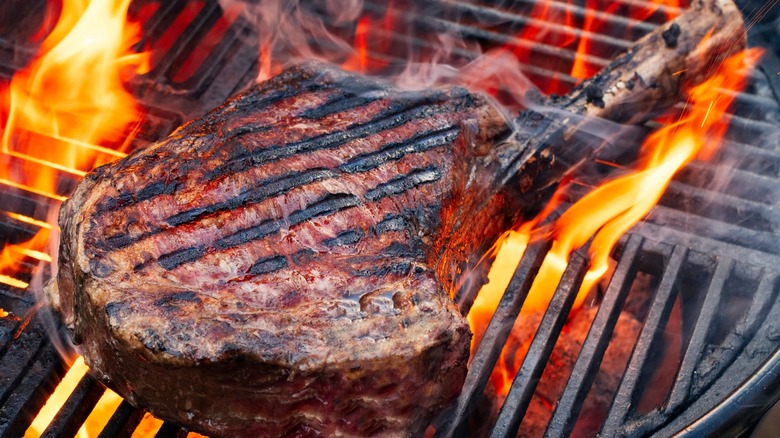The Absolute Best Way To Cook And Serve A Cowboy Cut Steak
If you're on the hunt for your new favorite cut of steak, the cowboy cut could be it. Also known as a tomahawk steak, this juicy cut of meat is big, bold, and ready for the grill. But before you rip it out of its butcher paper packaging and slap it over some flames, it might help to take some cooking advice from Chef K.C. Gulbro, Owner of both FoxFire and Copper Fox, and Chef Ambassador for Certified Angus Beef.
Gulbro was excited about this one. "Oh boy, this is one of my favorites!" he said. "A cowboy cut is a bone-in ribeye. With its marbling, rich fat, and bone, you have a very, very flavorful steak!" Flavorful steak sounds great, but we also want to be careful to let that flavor shine through. "This steak doesn't need a lot of help," Gulbro continued. "As the meat cooks, the marrow from the bone will actually add flavor to the steak."
That being said, he did have some good ideas for how to reinforce that great beef taste. As Gulbro put it, "I would use a simple marinade of ½ cup of olive oil, 3 tablespoons of Worcestershire, some rosemary, a dash of salt and pepper, and some crushed garlic." You'll then want to "let it marinate for up to four hours" before putting it over heat.
Cook up your cowboy cut and serve it in style
Now that your cowboy cut steak is nice and marinated, it's time to start cooking. "This steak is easily cooked on the grill or in a sauté pan," said K.C. Gulbro. "I like to put a sear on this steak to get the Maillard effect going – when the sugars in the meat caramelize, giving you another level of flavor – and then baste it with butter, garlic, and rosemary." It pays to always baste your steak with butter, regardless of what cut you're using.
Now that your cowboy cut steak is done cooking, it's time to plate it up. "Serve it whole or slice against the grain," Gulbro said. Cutting steak against the grain is important if you want to achieve the best possible texture. The grain refers to the muscle fibers running through the meat, and to cut against it means to cut perpendicular to those fibers. This ensures that you don't get long, chewy fibers in your steak.
It's more important for leaner cuts of beef such as flank steak, but it's good advice regardless. As for how to serve it, Gulbro felt "it doesn't really need a sauce!" But if you were looking for a steak sauce to use, he recommended you "make a nice compound butter using herbs (such as rosemary, thyme, and garlic), fold [it] into unsalted butter, and let it melt over the hot steak." For more ideas on how to do this, check out these tips you need for making compound butter.

